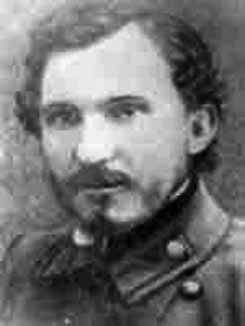Related Research Articles

Vladimir Alexandrovich Voevodsky was a Russian-American mathematician. His work in developing a homotopy theory for algebraic varieties and formulating motivic cohomology led to the award of a Fields Medal in 2002. He is also known for the proof of the Milnor conjecture and motivic Bloch–Kato conjectures and for the univalent foundations of mathematics and homotopy type theory.
In mathematics, Suslin's problem is a question about totally ordered sets posed by Mikhail Yakovlevich Suslin and published posthumously. It has been shown to be independent of the standard axiomatic system of set theory known as ZFC; Solovay & Tennenbaum (1971) showed that the statement can neither be proven nor disproven from those axioms, assuming ZF is consistent.
In the mathematical discipline of general topology, a Polish space is a separable completely metrizable topological space; that is, a space homeomorphic to a complete metric space that has a countable dense subset. Polish spaces are so named because they were first extensively studied by Polish topologists and logicians—Sierpiński, Kuratowski, Tarski and others. However, Polish spaces are mostly studied today because they are the primary setting for descriptive set theory, including the study of Borel equivalence relations. Polish spaces are also a convenient setting for more advanced measure theory, in particular in probability theory.
The Quillen–Suslin theorem, also known as Serre's problem or Serre's conjecture, is a theorem in commutative algebra concerning the relationship between free modules and projective modules over polynomial rings. In the geometric setting it is a statement about the triviality of vector bundles on affine space.
In mathematics, and particularly in axiomatic set theory, the diamond principle◊ is a combinatorial principle introduced by Ronald Jensen in Jensen (1972) that holds in the constructible universe and that implies the continuum hypothesis. Jensen extracted the diamond principle from his proof that the axiom of constructibility implies the existence of a Suslin tree.
In mathematics, homotopical algebra is a collection of concepts comprising the nonabelian aspects of homological algebra, and possibly the abelian aspects as special cases. The homotopical nomenclature stems from the fact that a common approach to such generalizations is via abstract homotopy theory, as in nonabelian algebraic topology, and in particular the theory of closed model categories.
In order theory, a partially ordered set X is said to satisfy the countable chain condition, or to be ccc, if every strong antichain in X is countable.
In mathematics, a Suslin tree is a tree of height ω1 such that every branch and every antichain is countable. They are named after Mikhail Yakovlevich Suslin.

Mikhail Yakovlevich Suslin was a Russian mathematician who made major contributions to the fields of general topology and descriptive set theory.
Andrei Suslin was a Russian mathematician who contributed to algebraic K-theory and its connections with algebraic geometry. He was a Trustee Chair and Professor of mathematics at Northwestern University.
In set theory, an Aronszajn tree is a tree of uncountable height with no uncountable branches and no uncountable levels. For example, every Suslin tree is an Aronszajn tree. More generally, for a cardinal κ, a κ-Aronszajn tree is a tree of height κ in which all levels have size less than κ and all branches have height less than κ. They are named for Nachman Aronszajn, who constructed an Aronszajn tree in 1934; his construction was described by Kurepa (1935).
A timeline of mathematical logic; see also history of logic.

Richard Joseph Laver was an American mathematician, working in set theory.
In mathematics, the Karoubi conjecture is a conjecture by Max Karoubi that the algebraic and topological K-theories coincide on C* algebras spatially tensored with the algebra of compact operators. It was proved by Andrei Suslin and Mariusz Wodzicki.
In mathematics, the Suslin homology is a homology theory attached to algebraic varieties. It was proposed by Suslin in 1987, and developed by Suslin and Voevodsky. It is sometimes called singular homology as it is analogous to the singular homology of topological spaces.
In algebraic geometry, a relative cycle is a type of algebraic cycle on a scheme. In particular, let be a scheme of finite type over a Noetherian scheme , so that . Then a relative cycle is a cycle on which lies over the generic points of , such that the cycle has a well-defined specialization to any fiber of the projection .(Voevodsky & Suslin 2000)
In mathematics, rigidity of K-theory encompasses results relating algebraic K-theory of different rings.
References
- ↑ Jech, Thomas (2013-06-29). Set Theory. Springer Science & Business Media. ISBN 978-3-662-22400-7.
- ↑ "The mathematics of Andrei Suslin". www.ams.org. 6 July 2019. Retrieved 2021-08-08.